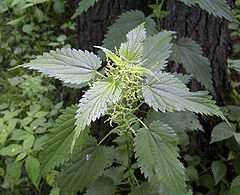Most of the English-speaking world understands what hiking is. For many, a popular activity to be sure, and one that promotes good health as well.
Hiking Around the World
Hikers in the U.K. are often referred to as “ramblers”, since rambling is their popular term for the sport. Australians enjoy a good bushwhacking now and then! This refers to the difficulty in walking through very dense forests, where the act requires the constant pushing aside of vegetation. In extreme cases, a machete is the best tool for the ‘average’ bushwhacker! The Aussies actually use the term for both on and off-trail hiking. Tramping and trekking are other popular terms. Tramping for New Zealanders, and trekking (which often includes a multi-day hike) for many in Pakistan, Nepal and the America’s. Trekking is also used for end to end hikes…such as on the Appalachian Trail.
Know the Dangers!
As enjoyable as hiking can be, obviously there are hazards to consider. If the body is unprepared for prolonged hiking (as well as inclement weather) conditions such as dehydration, hypothermia, frostbite or sunburn can occur. Other hazards can include losing your way, to bodily injury caused by rough terrain, or even animal attacks! No facts about hiking can omit the possibility of coming in contact with noxious plants. Poison oak, ivy and sumac are the main ones to avoid. Obviously tragedies can occur anywhere…even crossing the road in front of your house! With hiking, preparedness for just ABOUT anything is your best defense. Stinging nettles, are also a nasty bit of nature to encounter. They actually inject histamines and other chemicals into the body…which accompanies a ‘stinging’ sensation.
Beep Beep!
Since hiking has become a popular activity, some trails see more ‘traffic’ than others. It’s here where hiking etiquette is encouraged. For instance, on steep trails, when two groups meet, the ones going uphill are given the ‘right-of-way’. Not everyone walks the same speed either. So if a group has a mixture of fast and slow, it’s often the slower ones who are put in the lead, which then set the pace for the group.
Lions, Tigers and Bears, Oh My!
Generally peace and quiet are the preferred ingredients of an enjoyable hike, but if you choose to roam where wild animals have been known to appear, then making loud noises is encouraged…as a safety precaution.
Pack the Good Stuff
Other facts about hiking have to include the equipment that any experienced hiker packs. This is just as important as any of the required skills needed for the task.
There are outdoor organizations, like The Mountaineers, who believe their list of the Ten Essentials, is something no hiker should be without. Included here would be a compass, extra clothes, sunglasses and sunscreen, a first aid kit, a reliable LED flashlight, and a knife among other things. The list can also include anything you can think of that might come in handy…but, anything extra, also adds bulk to whatever you’re already carrying. Today, many a hiker wouldn’t make the trek without a GPS unit as well.
Leave No Trace
One must also be careful to keep hiking areas free of debris. Many hikers go by the “leave no trace” philosophy, whereby once they’ve moved on, there would be no trace of their visit, for the next set of hikers to see.
Experienced or not, a day of hiking can be rewarding. With anything though, some common sense must go along for the trek as well.
For the best in hiking gear, click here!
I’d love to read your comments about this article! Your own hiking tips or advice can be left within the fields below.






